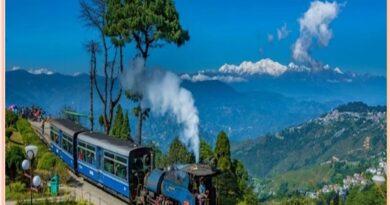‘The Gateway of India’-Mumbai’s Iconic Landmark
Gateway of India Mumbai
The Gateway of India is an iconic monument located in Mumbai, India. It stands as a symbol of the city’s rich history and architectural heritage. The Gateway of India was built to commemorate the landing of King George V and Queen Mary in Mumbai in 1911. However, the construction of the monument was completed in 1924. The monument is built in the Indo-Saracenic style, which combines elements of Indian, Islamic, and European architecture. It features intricate latticework and a grand arch that stands 26 meters high.
The Gateway of India Mumbai is situated on the waterfront at the Apollo Bunder area at the end of Chhatrapati Shivaji Marg in South Mumbai and overlooks the Arabian Sea. The monument has also been referred to as the Taj Mahal of Mumbai and is the city’s top tourist attraction. The Gateway attracts tourists from all over the world who come to admire its beauty and historical significance. It offers breathtaking views of the sea and is often bustling with activity.
History of Gateway of India
Built in Indo-Saracenic style, The structure is an arch made of basalt, 26 meters high. The foundation stone was laid in March 1913 for a monument, inspired by elements of 16th-century Gujarati architecture. The monument’s final design by architect George Wittet was sanctioned only in 1914, and construction was completed in 1924. Gammon India had undertaken construction work for the gateway. The Gateway was later used as a symbolic ceremonial entrance to India for the Viceroys and the new Governors of Bombay. It served to allow entry and access to India.

The Gateway is also the monument from where the last British troops in the Army of India left in 1948, following the British withdrawal from India a year earlier. It is located opposite the Taj Mahal Palace and Tower Hotel. The gateway is also a gathering spot for locals, street vendors, and photographers soliciting services.
Places to visit near the gateway of India
Ferry from the gateway of India
The ferry from the Gateway of India in Mumbai is a popular mode of transportation for reaching nearby destinations and tourist attractions, particularly Elephanta Island. The primary destination for ferries departing from the Gateway is Elephanta Island (also known as Gharapuri Island), home to the Elephanta Caves, a UNESCO World Heritage Site.
The Elephanta Caves are renowned for their ancient rock-cut temples and sculptures, especially those dedicated to Lord Shiva. Visitors can explore the caves and learn about their historical and religious significance. Ferries to Elephanta Island typically operate throughout the day, with departures starting in the morning and continuing until the evening. The frequency of ferries may vary depending on factors such as weather conditions and demand.
The ferry ride from the Gateway of India Mumbai to Elephanta Island takes approximately one hour each way, depending on sea conditions and the type of ferry. Tickets for the ferry can be purchased at the Gateway from ticket counters located near the waterfront. It’s advisable to arrive early, especially during peak tourist seasons, to secure tickets and avoid long queues.
The ferry ride offers passengers stunning views of the Mumbai skyline, the Arabian Sea, and the Gateway itself. It’s a memorable experience that adds to the overall enjoyment of visiting Elephanta Island.
Churchgate to Gateway of India
The distance from Churchgate to the Gateway of India in Mumbai is approximately 3.5 kilometers via Mahatma Gandhi Road and Madame Cama Road. It’s possible to walk from Churchgate to the Gateway, although it’s a relatively long walk. The route takes you through bustling streets and offers a chance to explore the city on foot.
Taxis and auto-rickshaws are readily available in Mumbai and offer a convenient way to travel from Churchgate to the Gateway of India Mumbai. Make sure to negotiate the fare with the driver before starting your journey.

Mumbai has an extensive public bus network operated by Brihanmumbai Electric Supply and Transport (BEST). You can check the routes and schedules to find a bus that goes from Churchgate to the Gateway. You can take a local train from Churchgate Station to Chhatrapati Shivaji Maharaj Terminus (formerly Victoria Terminus), which is not far from the Gateway. From there, you can walk or take a short taxi/auto-rickshaw ride to reach your destination.
How to Reach Gateway of India
The nearest airport to the Gateway of India Mumbai is the Chhatrapati Shivaji Maharaj International Airport. It is the primary airport serving Mumbai and is located in the suburb of Andheri, approximately 25 kilometers north of the Gateway. Mumbai’s suburban railway network is extensive, and Churchgate Station is the nearest railway station to the Gateway of India. From Churchgate, you can either walk or take a short taxi/auto-rickshaw ride to reach the monument.
Taxis and auto-rickshaws are widely available throughout Mumbai. You can simply hail one and ask the driver to take you to the Gateway. Make sure to negotiate the fare before starting your journey. Brihanmumbai Electric Supply and Transport (BEST) operates bus services throughout Mumbai. You can check the routes and schedules to find a bus that passes near the Gateway of India Mumbai and disembark at the closest stop.




